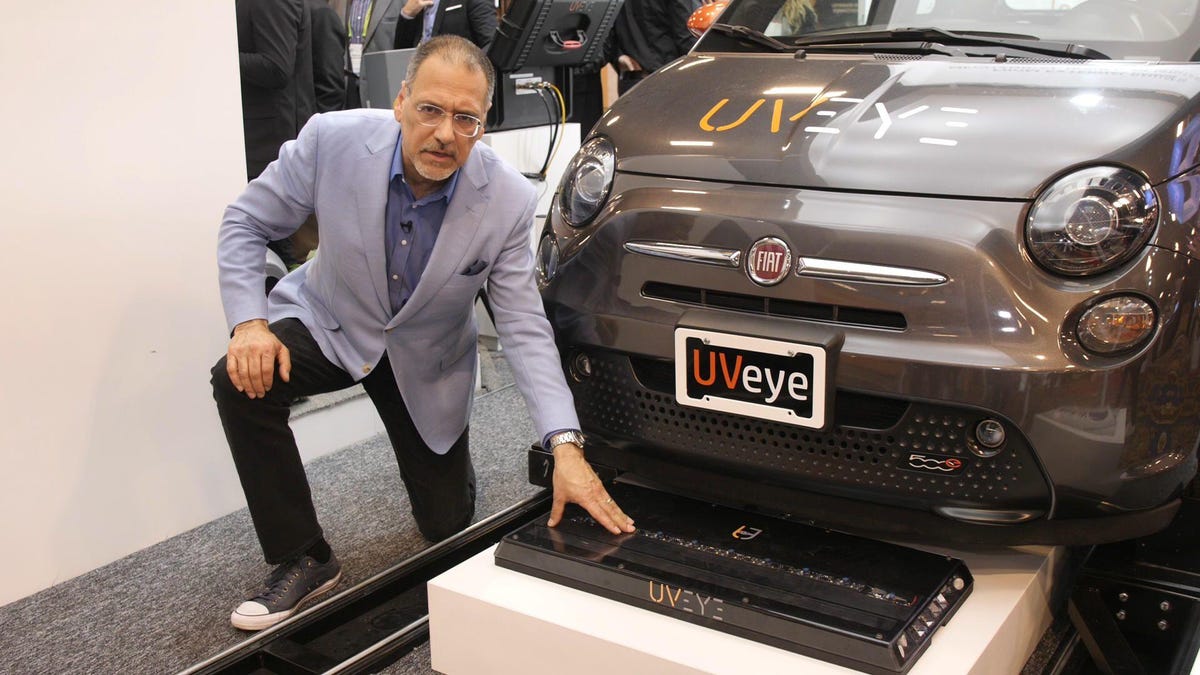Car scanner finds problems the human eye would miss
UVeye scans the outside and undersides of cars to find dings, dents and bombs.

I don't normally cover scanners on CNET but this one scans cars, so it's pretty interesting. Originally founded to scan the undersides of cars for threats like bombs, Israeli startup UVeye wants to bring that tech to an everyday audience.
To scan a car, a flat, ground-mounted module looks up at the bottom of the car with three high-res cameras and over a dozen calibrated LED lights. As the car rolls past, a 3D image is built and processed with proprietary image-recognition software. It claims to spot any anomalies under the car, ranging from damaged areas to missing parts or leaks.
UVeye creates a detailed 3D model of a car's belly in real time, allowing the system's software to look for anomalies ranging from oil leaks to hidden weapons or bombs.
UVeye says a key part of its technology is the combination of machine learning paired with stock data about cars, which allows it to quickly identify what's normal and what isn't. That dual reference approach allows the system to recognize a wide range of anomalies, not just those from a stock set of predictions.
Another version of its tech loads the cameras into a side-facing assembly about the size of a fire hydrant that is expressly tuned to read tires, determining their size, brand and level of wear. Yet another scanner uses two arching arms over and around the car to scan for dents, scrapes, scratches and missing parts.
Mounted scanners on the overhead arms allow the system to become a smart dent and scratch detector, which could potentially automate the process of assigning value to a used car.
Numerous businesses are now being targeted to adopt vehicle imaging. Wholesale auto auctions process millions of cars each year yet still rely on people milling around the vehicles, eyeballing them for a minute or two to assign a value. Rental companies process millions of returns each year, as well as end-of-life inspections before they sell off a used car. And new mobility companies will have fleets of shared or autonomous cars that may not have a human monitoring their condition most of the time.
Scanning 3D objects is hardly a new technology, but using it on cars seems like a timely idea as vehicles move from objects we personally care about to being someone else's vehicle that provides us a temporary service.

